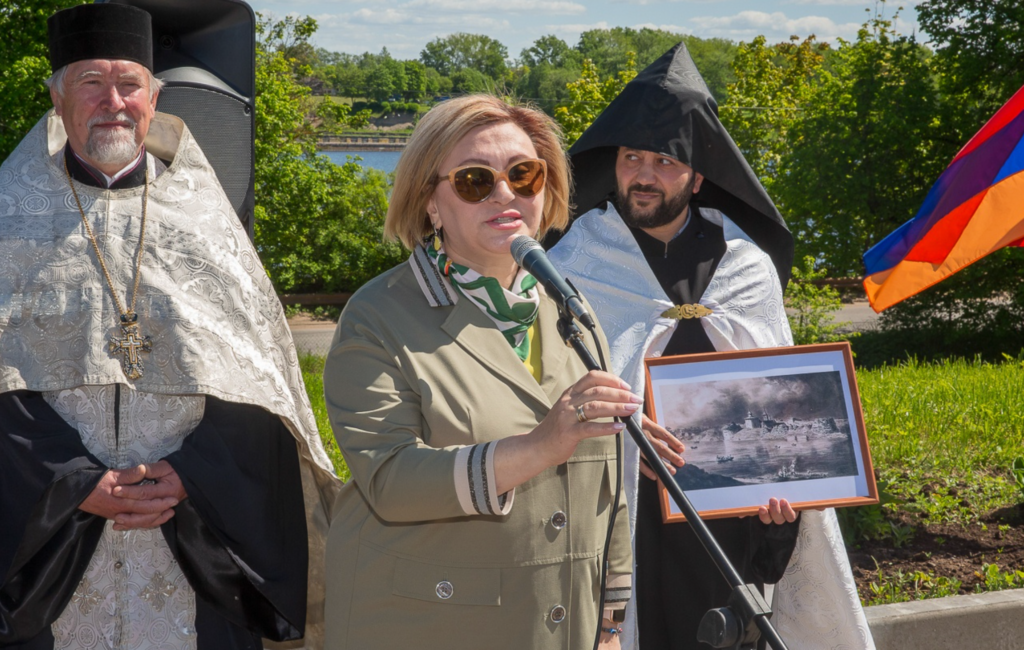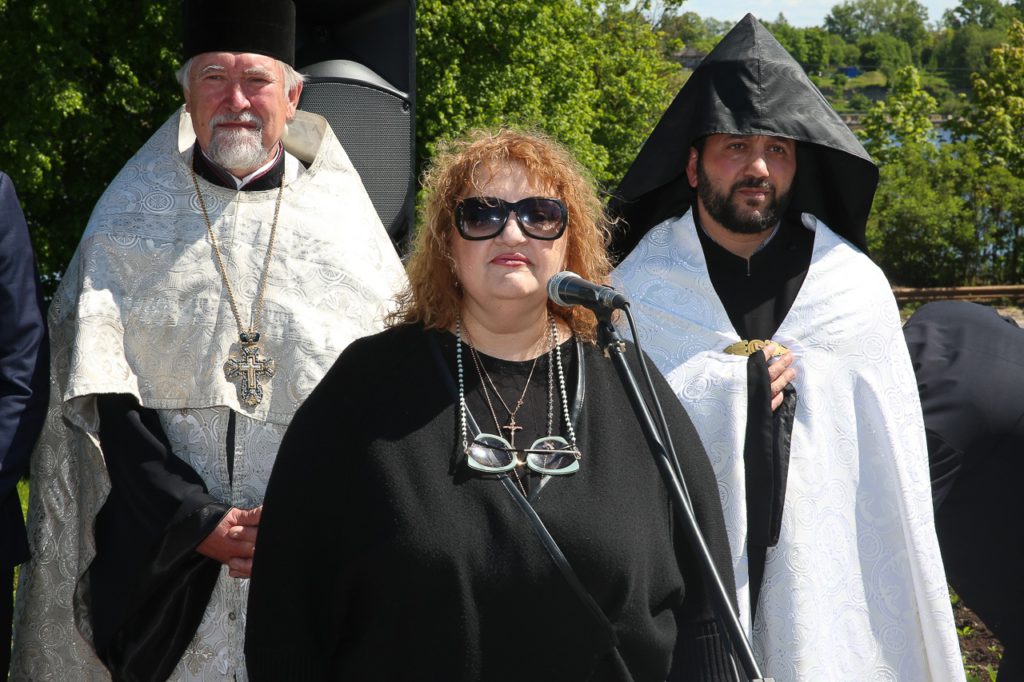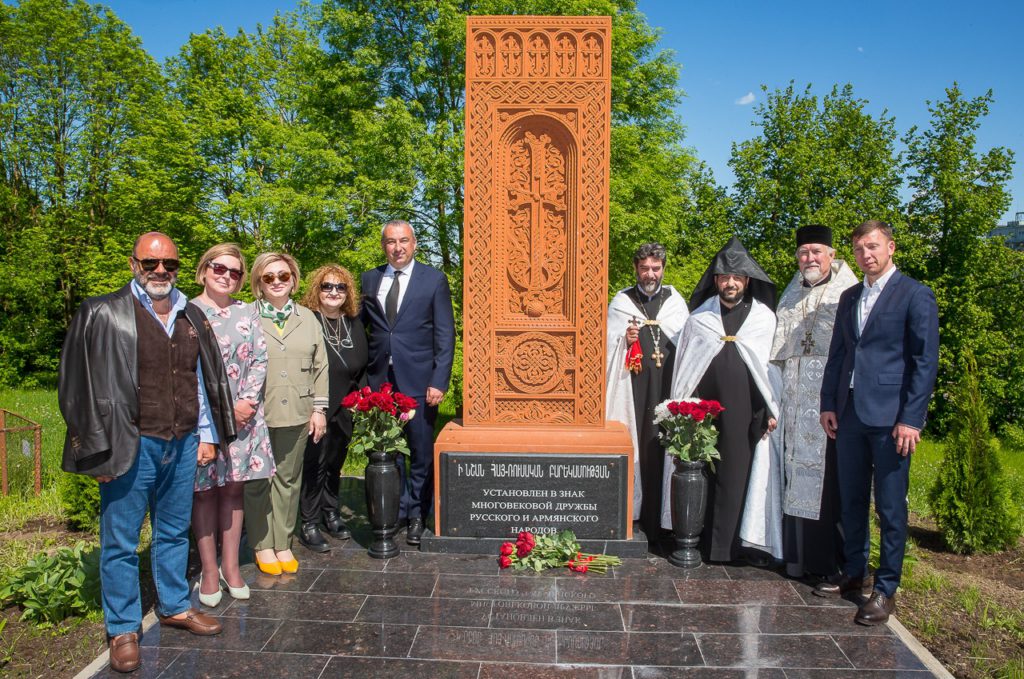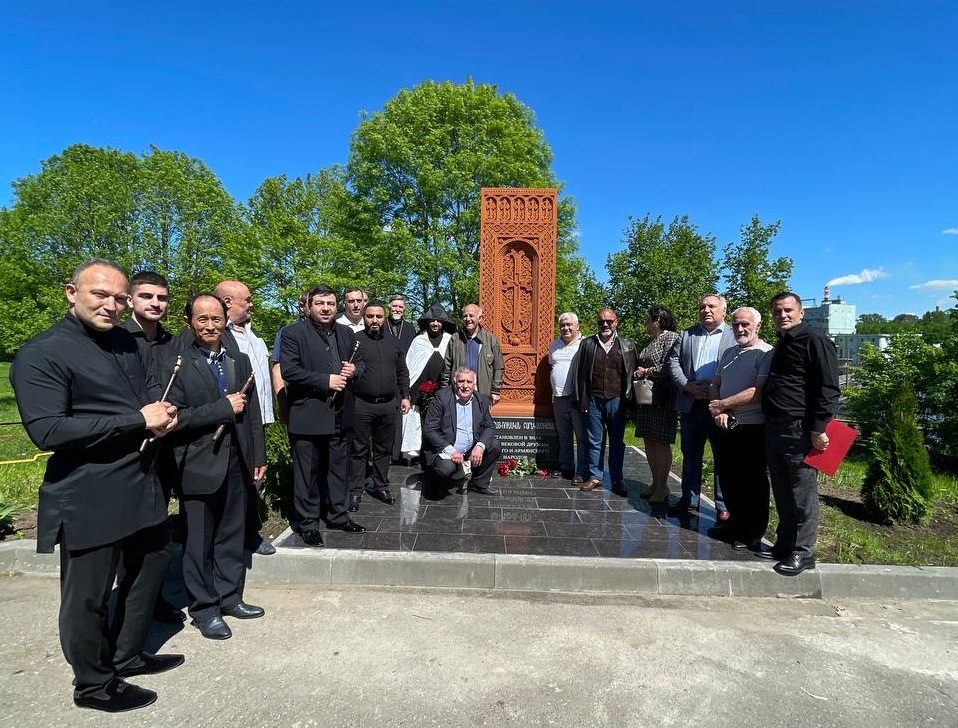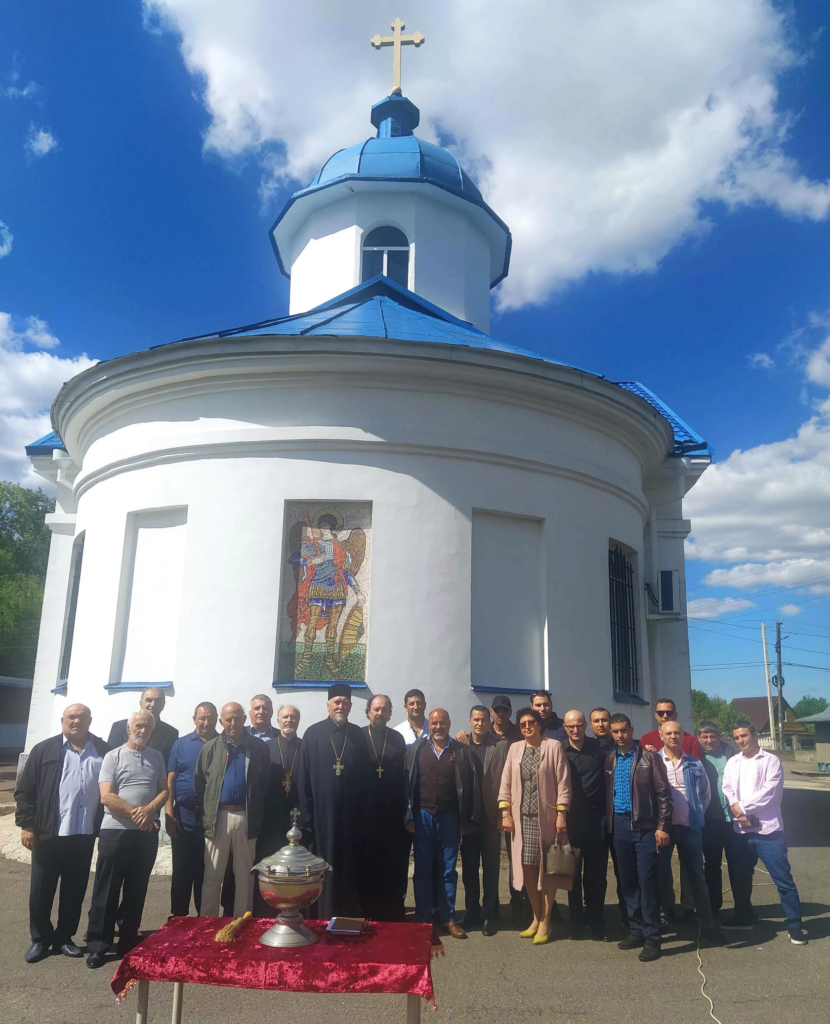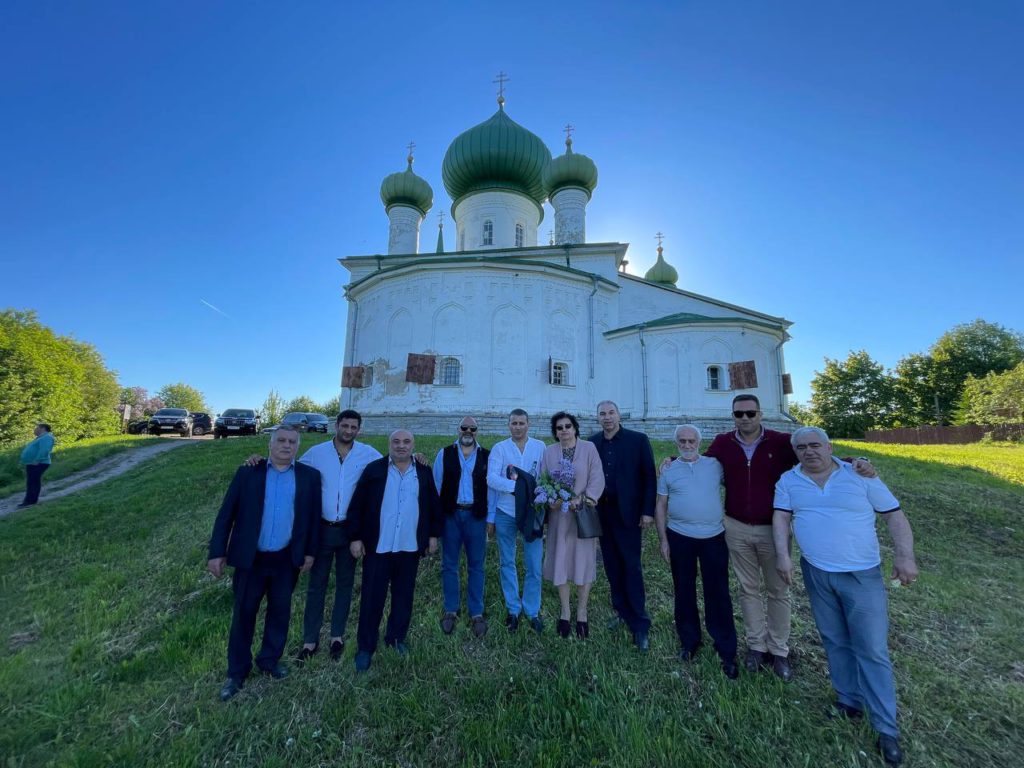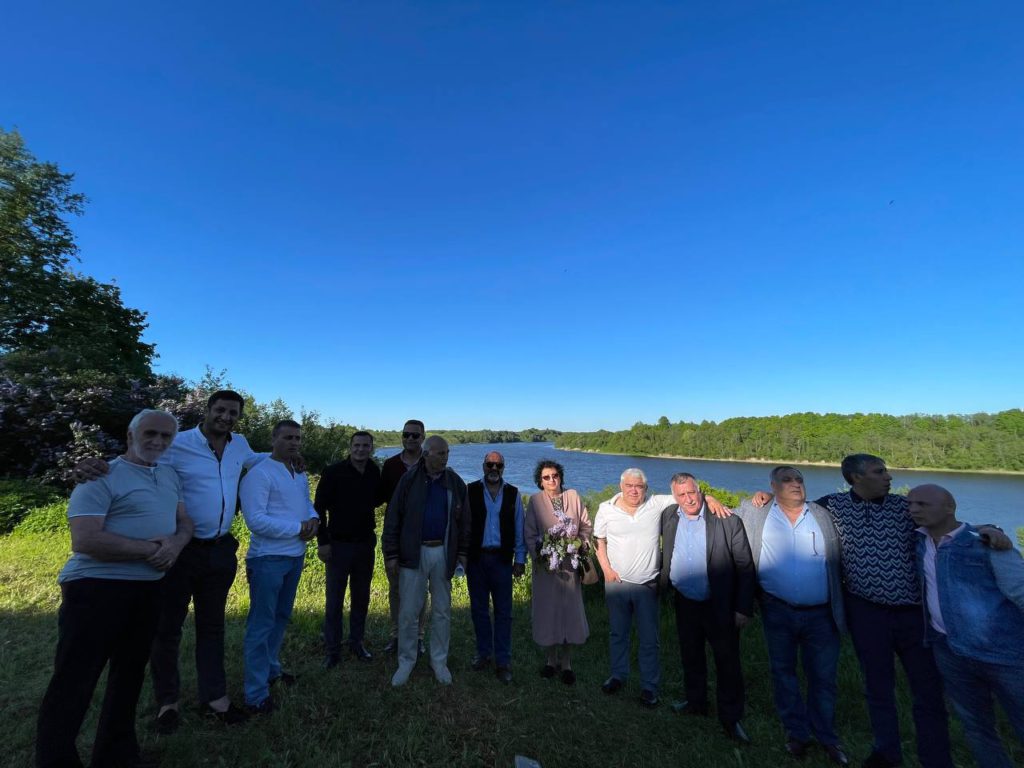On June 7, 2022, a very important event for many factors took place in Volkhov – the opening of two Crosses – at the Orthodox Church of the Archangel Michael and a khachkar (cross-stone) as a sign of the centuries-old friendship of the Russian and Armenian people.
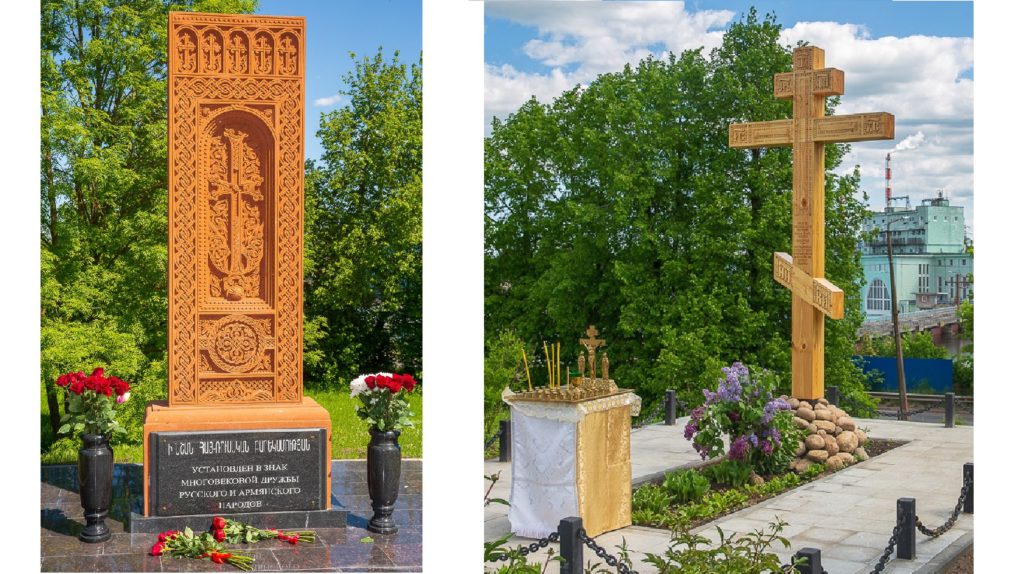
Due to the significance of the June 7 event and in order to maximize public awareness both in St. Petersburg and the region, in Russia and Armenia, we offer a detailed story below. Also, we are going to write on the website of the Armenian autonomy and in social networks. We divided the material into several parts:
Until June 7 (Sinyavin Heights)
• June 7 before the ceremony
• Ceremony of Consecration of the Russian and Armenian Crosses
• Video clips and photos of the consecration ceremony
• Meal after the consecration of the two Crosses
• Visiting memorable places in the first capital of ancient Russia – Staraya Ladoga
• Afterword about the Armenian community of St. Petersburg, the region and Russia.
This page uses videos from ProTV and photos from Timur Rumyantsev.
Until June 7
Under the leadership of Gagik Hayrapetyan, a lot of issues were resolved regarding the coordination of the project for the installation of the khachkar, financial issues and the delivery of the khachkar from Armenia to the city of Volkhov. Khachkar was made by varpet (master) Zakhar Balumyan.
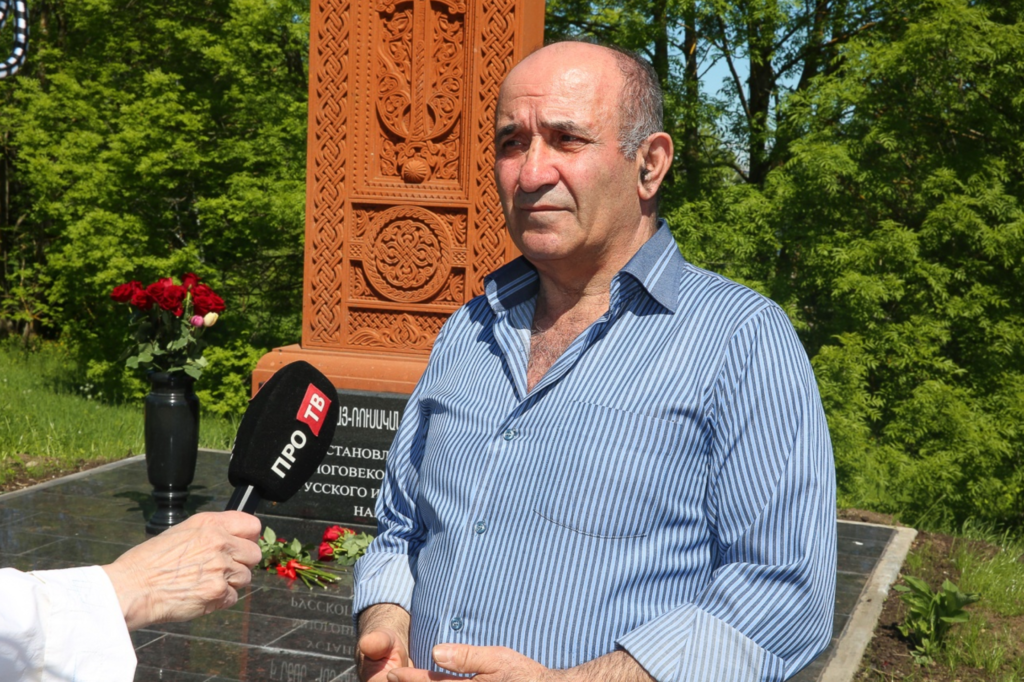
Later, at a meal in his restaurant ‘Edem’, Gagik Usikovich will say: ‘The usual way of forming a community is its formal registration and after – practical work. In Volkhov we have done the opposite: first we implemented a very complex practical project. And after it, we will begin the formal part of registering our community. Khachkar will be the key to both our unity in the community and Russian-Armenian relations in our region.’
The Armenian National Cultural Autonomy of St. Petersburg (ANCA) informed the public about the upcoming event. In particular, on the ANCA website, in social networks and in individual WhatsApp mailings to hundreds of members of the Armenian community, there were:
- material ‘Armenian leaders and the Volkhovsky region’
https://www.armspb.org/post/volhov-1 - welcome letter from the head of the Representative Office of the Ministry of Foreign Affairs of the Russian Federation in St. Petersburg – Vladimir Vasilievich Zapevalov
https://www.armspb.org/post/6-6-2022 - announcement on May 31 about events on June 7
https://www.armspb.org/post/anons-7-6-2022
June 7 before the ceremony
On June 7, more than 20 people were responded and went to the event announced in the Armenian community. Among them were:
- Maria Babayan, acting Consul General of Armenia in St. Petersburg
- Hieromonk Poghos Vardanyan, Vicar of the Head of the Diocese of the Armenian Apostolic Church in St. Petersburg and the North-Western Region
- Karen Mkrtchyan, Chairman of the Armenian National Cultural Autonomy of St. Petersburg (ANCA)
- Priest Ephraim Zargaryan, Rector of the Church of the Holy Resurrection
- Ruzanna Kurginyan, Director of the Lazarev Educational Center
- Rostom Gabrielyan, Chairman of the Armenian community ‘Erebuni’ (Shlisselburg)
- Anaida Kalashyan, employee of the Consulate General of Armenia
- Vardan Harutyunyan, head of the duduk group of the Lazarev Educational and Educational Center
- Sergey Polyanichko, leader of the Russian Horn Orchestra
- Valery Nam, duduk player
- Ashot Karapetyan, duduk player
- Khoren Sahakyan, Entrepreneur (Warm House)
- Eduard Mosesov, Member of the ANCA Council of Veterans
- Lyova Hakobyan, Armenian community of Kolpino
- Mikayel Grigoryan
- Vardkes Babayan
- Parkev Kolozyan
- Vahagn Hakobyan
- Avetik Adamyan, lawyer, founder of the charity fund ‘Our Duty’
- Armen Safaryan. Entrepreneur, founder of the Charitable Foundation ‘Our Duty’
- Narek Sahakyan
- Vahan Babakhanyan, Assistant to the Chairman of ANCA, Member of the Coordinating Council of Russian-Armenian Organizations, Chairman of the NGO “Khachmeruk”.
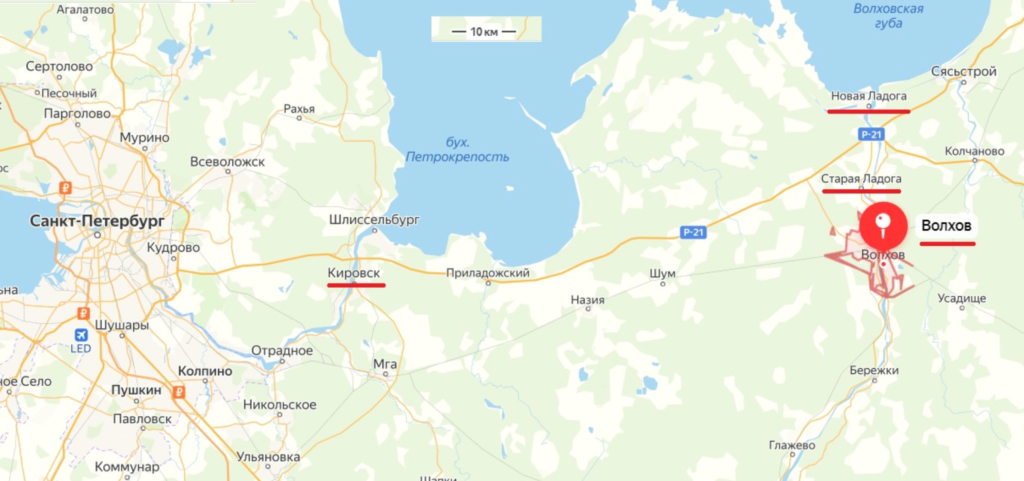
The city of Volkhov is located at a distance of about 140 km from St. Petersburg. In order to be in time for the opening at 12:00, it was necessary to leave at about 9:30, but several groups gathered in different places in St. Petersburg and went by cars much earlier.
The road from St. Petersburg to the city of Volkhov runs through places called the Sinyavinsky Heights. It was the place of fierce battles with the Nazis in the Second World War. Having captured the area to Lake Ladoga from the south since 1941, they blocked the road from the east to Leningrad. Now it is a territory in the Kirov urban settlement of the Leningrad Region.
The 80th anniversary of the Second Sinyavino operation
In August 2022 there will be 80 years since the start of the 3rd Sinyavin operation (1942) with the aim of breaking the blockade of Leningrad during the Great Patriotic War. It was an offensive operation of the Red Army of the Volkhov and Leningrad fronts, carried out against the 18th German Army of the Army Group North. It lasted about 2 months. With their offensive, the Soviet troops did not allow the enemy to carry out the plan to capture Leningrad under the code name ‘Northern Lights’ (German ‘Nordlicht), pinned down significant forces of German troops and thereby contributed to the defense of Stalingrad and the North Caucasus. Already at the beginning of 1943, as a result of the next operation ‘Iskra’, the blockade was broken.
On April 29, 2010, in honor of the celebration of the 65th anniversary of the Victory over fascism in the Great Patriotic War and in connection with the 300th anniversary of the Armenian community of St. Petersburg and the Leningrad region, thanks to Grachya Poghosyan, the khachkar was solemnly opened and consecrated at the Sinyavin Heights memorial.
It was the first monument from national communities in this place. Later, other communities erected their own monuments, in connection with which the road to the main monument was named the international Alley of Memory and Glory.
And therefore, for members of the Armenian community traveling to Volkhov, it was important to turn a little off the road in order to pay tribute to memory.
Laying flowers on the khachkar (cross-stone) installed by Grachya Poghosyan in 2010
Video (4,5 min)

There are several graves of the sons of the Armenian people in the Memorial on the Sinyavin Heights. Next to the main monument is the grave of the commander of the machine-gun company of the 406th rifle regiment of the 124th Order of Suvorov, second degree, the Order of the Red Banner of the Mginsk-Khingan Rifle Division, Senior Lieutenant Zhores Bagratovich Vartapetyan (1923-1943).
From the memories of his brother-soldier: ‘The brave commander was well known in the regiment. I remember the night battle on the Sinyavinsky Heights. The Germans fired at the positions with heavy fire, and then rushed to the attack. Some of our firing points fell silent, many were wounded, and some soldiers were confused. And then Jaurès appeared in the trenches. His bold and quick actions brought order to the defense of the site. The enemy attack was repulsed, but Jaurès himself died a heroic death.’
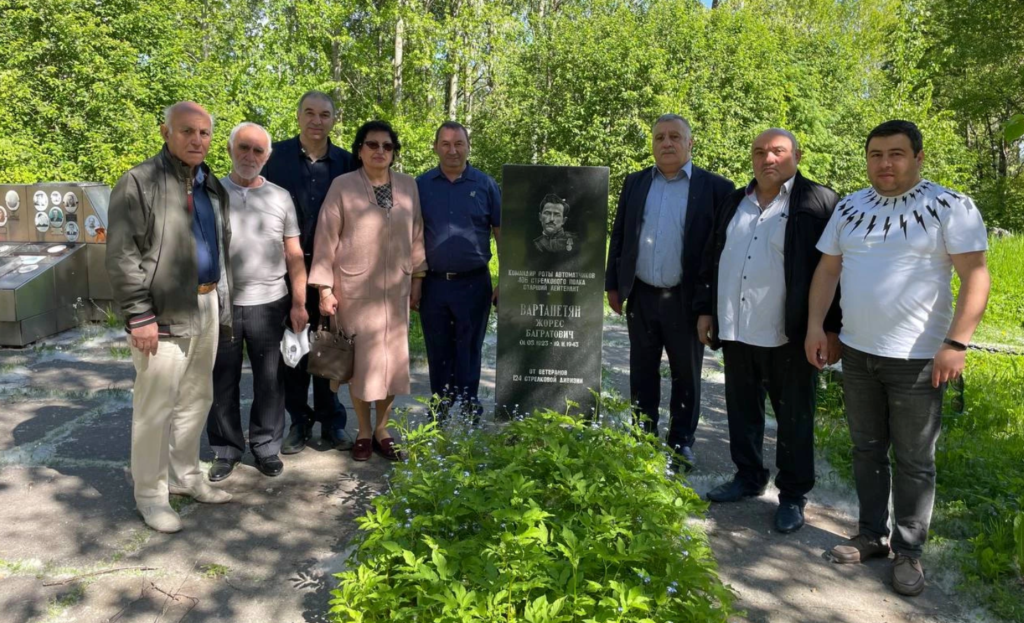
About the Church of the Archangel Michael in Volkhov
When was it built?
Why did you have to rebuild from the foundation in 1991?
In honor of what is the new Cross at the Temple?
Video conversation with Fr. Andrew before the start of the consecration ceremony (7 min)
Ceremony of Consecration of the Russian and Armenian Crosses
The event started at 12:10.
The host was Vahan Babakhanyan, he announced the names of the speakers according to a pre-agreed schedule.
The priests began the ceremony,
- led by from the Russian Orthodox Church – the rector of the Church of the Archangel Michael Fr. Andrey Yakhimets
- from the side of the Armenian Apostolic Church, the vicar of the head of the diocese of the Armenian Apostolic Church for St. Petersburg and the North-Western region, Hieromonk Poghos Vardanyan.
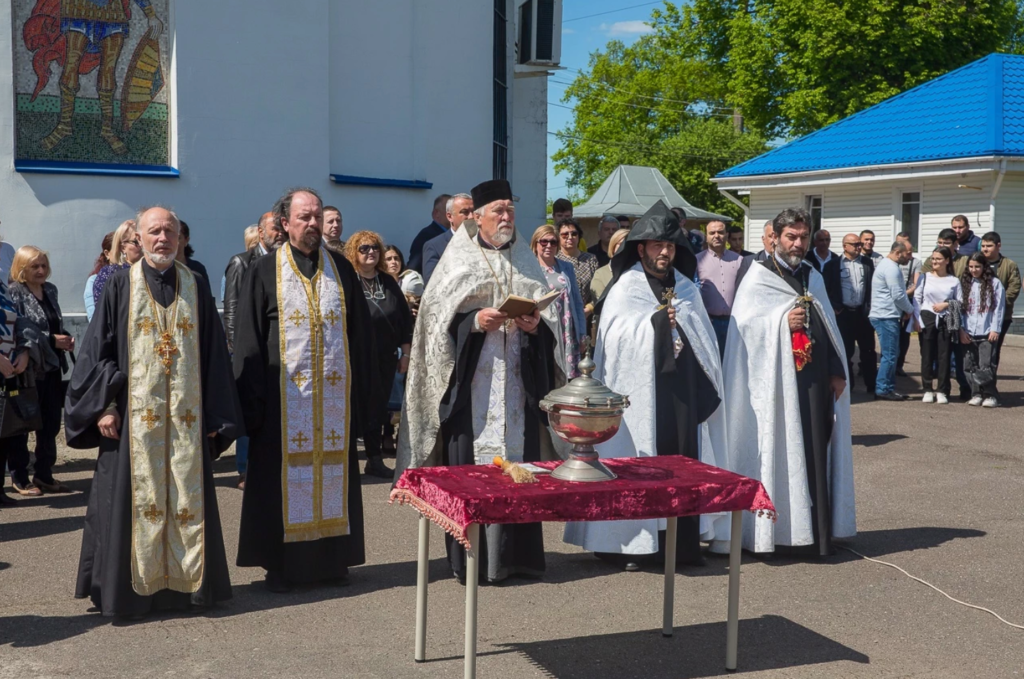
The priests of the Russian Orthodox Church, standing nearby, read prayers in turn, performing the Rite of consecration, respectively, of the Cross at the Temple and the khachkar.
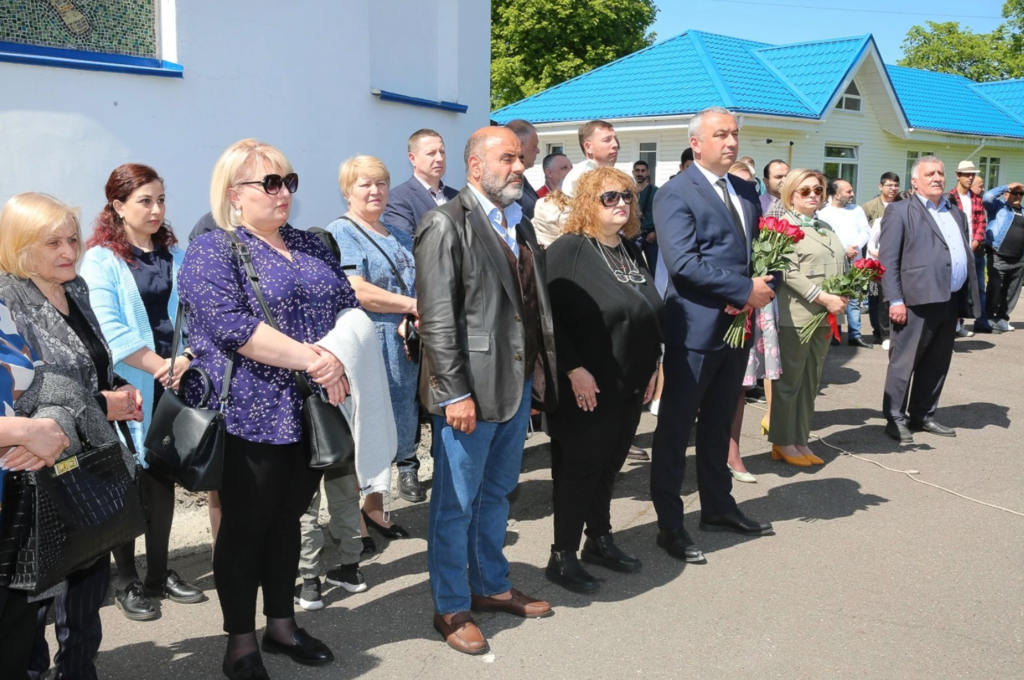
Approaching the Crosses in turn, the priests consecrated them.
After the grand opening of two monuments Fr. Andrew and Fr. Pogos made speeches.

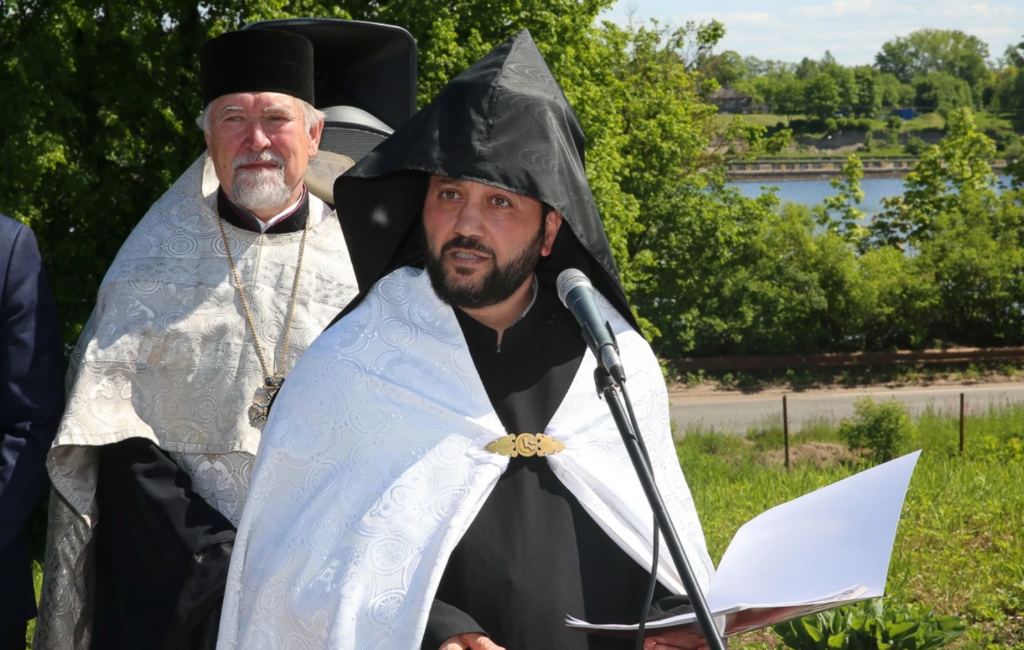
Fr. Poghos congratulated the Armenians of Volkhov with an important event, emphasizing that this monument will testify to the ancient common shrines and will become a memory of the duty to preserve and develop fraternal Christian love and friendship between the Armenian and Russian peoples.

The head of the Administration of the Volkhov District, Aleksey Viktorovich Britsun, said in his speech: ‘We have always admired the diligence and responsiveness of our brothers. And in any difficult moment, we are ready to support each other. Today is the right time to open a khachkar. At a time when monuments are being demolished in Europe, the friendship between peoples is being destroyed. We, on the contrary, are becoming even closer to each other. The friendship between the Armenian people and the Russians was, is, and may it always be so!’
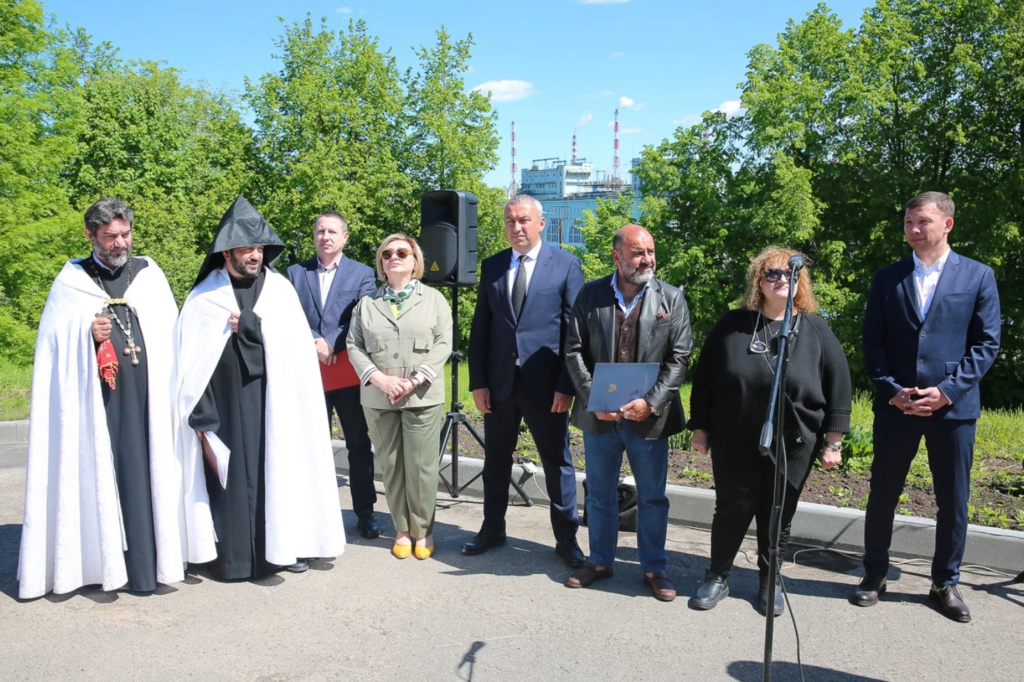
Then it was the time to speak to:
- The Head of the Municipal Formation of the City of Volkhov – Alisa Yurievna Harutyunyan
- The Head of the Volkhovsky District – Alexander Alexandrovich Nalyotov
- Vadim Mikhailovich Khovailo, an employee of the Leningrad Region Committee for Local Self-Government, Interethnic and Interfaith Relations. He read out an appeal from the Chairman of the Committee – Lira Viktorovna Burak
- The Chairman of the Armenian National-Cultural Autonomy of St. Petersburg – Karen Romikovich Mkrtchyan
- Entrepreneur, main organizer of the khachkar installation project – Gagik Hayrapetyan. After the end of the event, he invited to his restaurant ‘Edem’ for a meal.
Karen Mkrtchyan read:
- a poem by Armen Arakelyan, who lives in Volkhov, but that day was in another city. The text of the poem is on the ANCA website https://www.armspb.org/post/armenia-2015
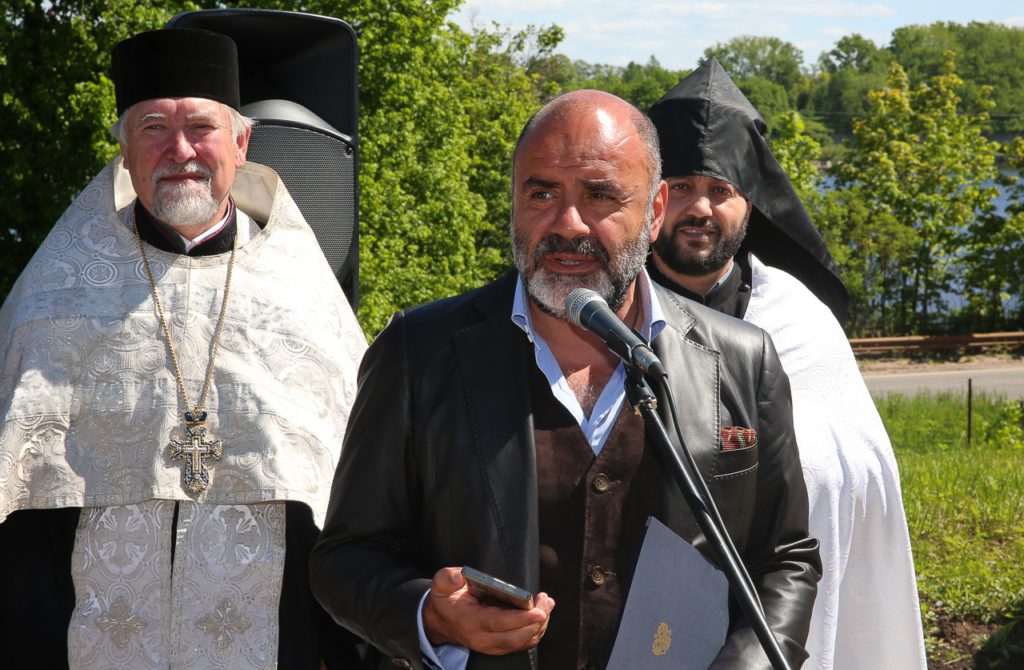
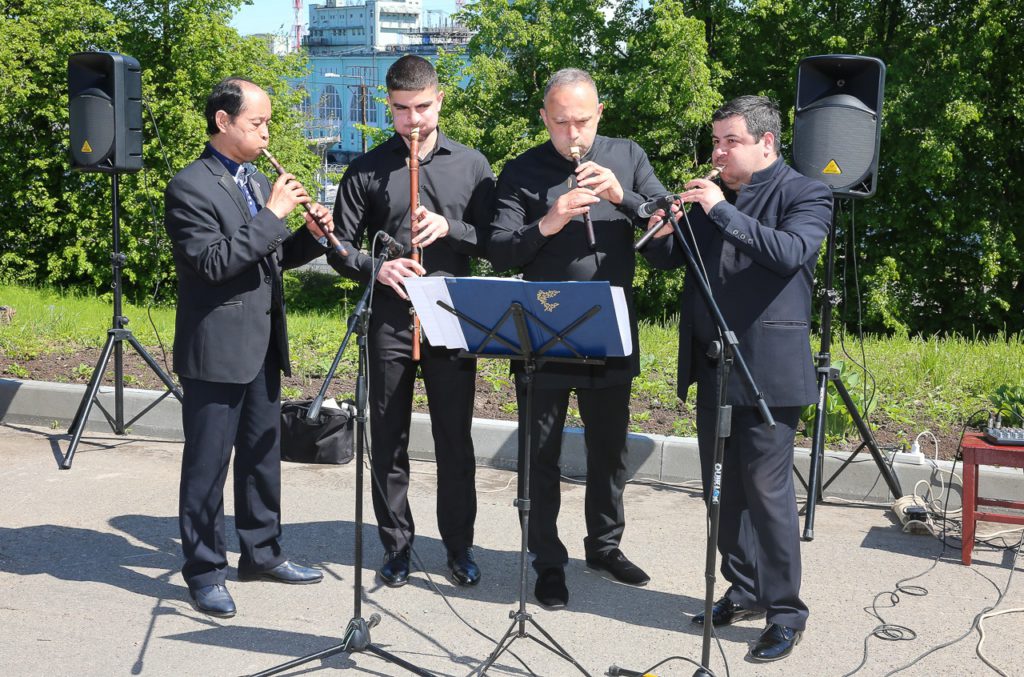
After greetings, a group of duduk players from the Lazarev Educational Center led by Vardan Harutyunyan performed.

Vahan Babakhanyan thanked everyone for participating in the event, saying metaphorically that the consecrated Cross at the Church of the Archangel Michael symbolizes the resurrection, because this Cross commemorates those, whose memory was previously forgotten. The new Cross will help to protect memory, respect, and love. And we must cherish this Cross in our hearts, just as the khachkar itself cherishes the Cross in its stone heart.
In addition to the speakers and the members of the Armenian community mentioned above who came from St. Petersburg, the event included:
- employees of city and district authorities,
- parishioners of the Church of the Archangel Michael,
- members of the Armenian community of Volkhov,
- representatives of public organizations,
- journalists.
In total there were about 150 people, which is a considerable number for this city during working hours and on a weekday.
At the end of the ceremony, a group of participants took a picture at the Temple.
Video clips and photos of the consecration ceremony
We offer two videos:
- short report from ProTV (3 min)
- more detailed video clips (16.5 min)
A short report from the Volkhov district TV channel ProTV.
Video (3 min)
Full Video (16,5 min)
Photo Album VK 120 photos – https://vk.com/album4530876_286078449
Meal after the consecration of the two Crosses
At the end of the event, as noted above, Gagik Hayrapetyan invited everyone to his restaurant ‘Edem’ for a meal.
Video (8,5 min)
Visiting memorable places in the first capital of ancient Russia – Staraya Ladoga
The members of the Armenian community of St. Petersburg visited memorial sites in Staraya Ladoga, the first capital of ancient Russia.
The first place is associated with the name of Ivan Aivazovsky (Hovhannes Ayvazyan) (1817-1900), who, during his studies in St. Petersburg, was in Staraya Ladoga and painted pictures.

One of the famous ‘View of Staraya Ladoga’ was written by him in 1835, when he was 18 years old. In 2017, it was the 200th anniversary of I. Aivazovsky, and the Armenian community participated in events.

It is symbolic that on June 7, 2022, at the opening ceremony of two Crosses in the city of Volkhov, the head of the District Administration Alexei Britsun presented Fr. Poghos Vardanyan received a copy of Aivazovsky’s painting, and in return he received a book about the artist as a gift. And this coincidence is not a ‘coincidence’ at all.
July 17, 2022 – the 205th anniversary of the great artist. Therefore, after the ceremony in Volkhov, the guests also visited this famous place by the river in Staraya Ladoga, where 187 years ago young Ivan (Hovhaness) painted a picture, the original of which is in the Russian Museum in St. Petersburg.
Russian-Armenian relations are reminiscent of patterns in khachkars. As a rule, one connection turns out to be associated with another or a third, and whole plexuses are obtained. A small example: speaking of Ladoga, we ‘came’ to Aivazovsky. But here is the continuation of the ‘chain of Russian-Armenian ties.’ The second wife of the artist was Anna Nikitichna (Mkrtichevna) Sarkisova-Burnazyan (1856-1944), about whom he said that his marriage to Anna in 1882 ‘brought him together with his (Armenian) nation’ even more. We are talking about more than two centuries since the birth of Aivazovsky, but at the same time, Anna Burnazyan survived until the Second World War – our contemporary. Anna’s namesake – pilot Sergei Burnazyan (May 28, 1918 – April 15, 1943) became a Hero of the Soviet Union. He studied in Yerevan, at school No. 8 named after A.S. Pushkin. In Yerevan, a street is named after the Hero. This is how we came from Burnazyan to Pushkin, whose birthday was celebrated on the eve of the opening ceremony of the two Crosses. Yes, and Burnazyan’s birthday was also a few days earlier.
School №8 named after A.S. Pushkin – sister school No. 619 of the Kalininsky district of St. Petersburg. In 2017, they were, respectively, 80 and 20 years old. Then in St. Petersburg, in the Oktyabrsky Big Concert Hall, the ‘joint 100th anniversary’ was celebrated, in which the delegation of the sister school from Armenia participated. And in 2021, the head of the Russian House in Yerevan, Vadim Fefilov, visited school No 8 named after Pushkin. Such a “khachkar ligature” of Russian-Armenian relations is found every time in any area and topic. It remains to remember, honor and develop this tie of interweaving.
Video (3,5 min)
The second place visited by those who came from St. Petersburg is one of the sacred places of the spiritual power of Staraya Ladoga on Malysheva Hill – the Church of the Nativity of John the Baptist. This is the former four-pillar five-domed cathedral of the John the Baptist Monastery, now it is a functioning Orthodox church with a chapel of St. Paraskeva Pyatnitsa and an octagonal pillar-shaped bell tower.
Known by references since 1276, the modern building was built in 1695.
At the foot of Malysheva Mountain there is a holy spring (spring) of the great martyr Paraskeva Pyatnitsa, the oldest known holy spring in the Leningrad region and possibly all of Russia. This spring has served as a place of worship since at least the 9th century. A staircase leads down to the source and the font.
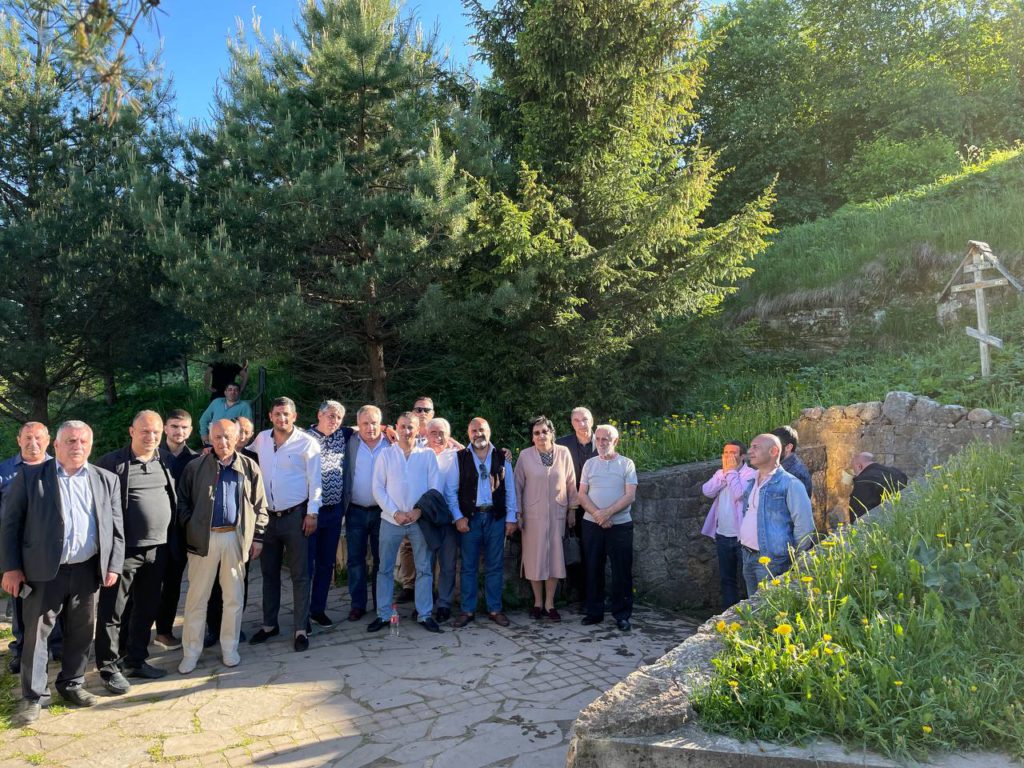
Afterword about the Armenian community of St. Petersburg, the region and Russia
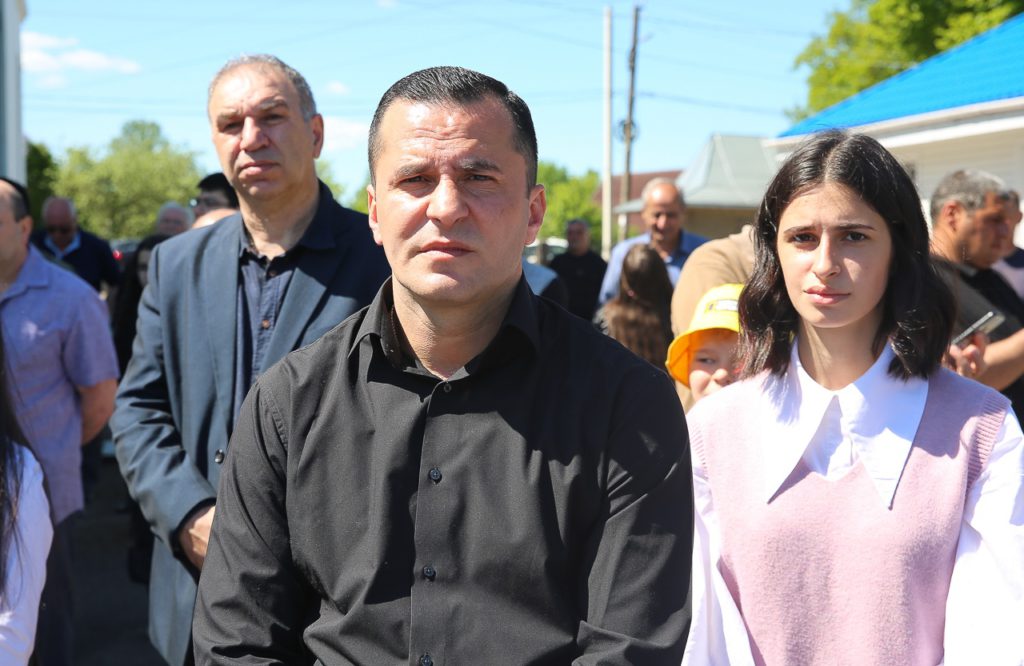
It is difficult to finish the story about so significant event of June 7, it is difficult to single out one person from the community of St. Petersburg or from the community in Volkhov – everyone deserves great gratitude for their participation on this day. But I would like to express special thanks to the Volkhov citizen Harut Balyan and wish his son Arthur a successful performance in Yerevan. These days he plays there at a major chess tournament – the 13th annual tournament in memory of international grandmaster Karen Asryan (1980-2008). 98 chess players play in the tournament, including from Brazil, Indonesia, Iran, Kazakhstan and other countries. So far, on June 8, after two rounds, 15-year-old Artur has only one draw, while those, who play against him, are 2-3 times elder.
We hope that on the topic of chess, and on the topic of education, and on the topic of joint participation in various events and projects, the Armenian communities of St. Petersburg and Volkhov will cooperate more closely.

